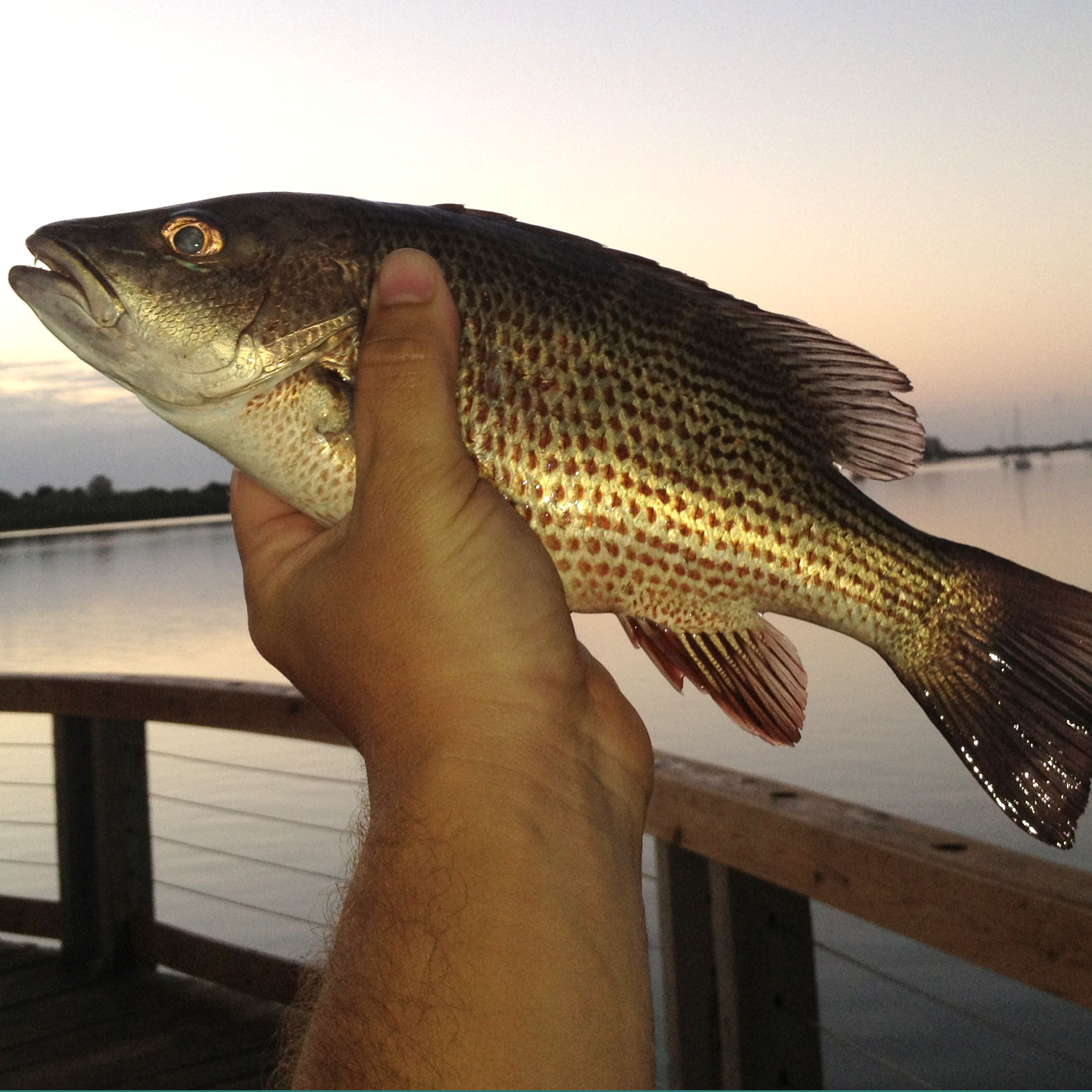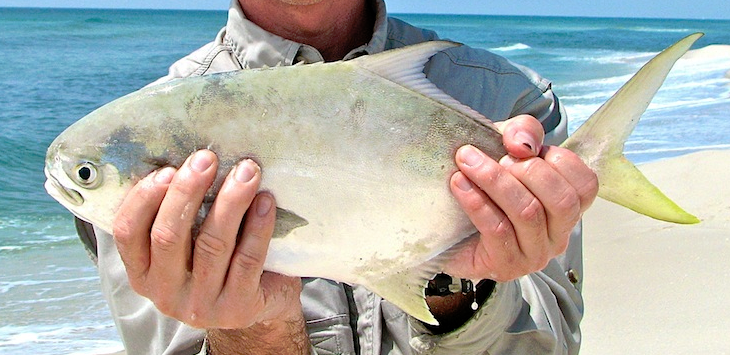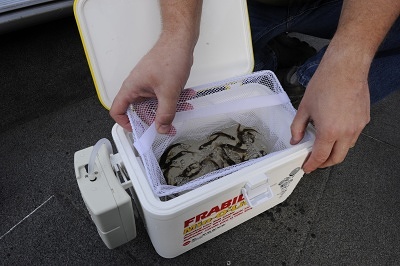Mangrove Snapper are one of the most popular and abundant inshore snappers there is. They are found throughout Florida’s shores and are relatively easy to catch.
Mangrove Snapper (Lutjanus griseus), also known as Gray Snapper, can reach up to 17 lbs in Florida, but inshore they tend not to get much bigger than 20” in length, and average around 12-14”. The good news about their smaller size inshore is that they are quite tasty in that size range.
Identification
Here are a few traits to help identify Mangrove Snapper
- Dark brown or grey with reddish or oranges spots causing a colorful hue
- In young fish a dark band from nose to gills running through the eye is present
- Two large canine teeth on upper jaw
- Dorsal fins have a red / reddish brown border
- No dark spots are present
Where to Find Mangrove Snapper
The Mangrove Snappers range is from Massachusetts all the way down to Brazil. The massive range means that they are found in just about every part of Florida. From the offshore reefs to brackish water mangrove lined rivers these tasty fish can be found.
Inshore, they are most frequently found around structure. They can be found along shore lines with mangrove tree overhangs, this is where their common name comes from, and around any type of hard structure (such as piers, bridges, rock piles and wrecks), and have even been found in grass flats. Basically, they can be found around almost any structure along Florida’s coast.
Mangrove Snapper prefer warmer waters, and move inshore during the warmer months. Waters with darker bottoms will attract fish earlier in the season, but all types of bottoms will hold fish once the water temperatures approach 70 degrees.
If there is a current present, most fish will be found just down current of the structure. They use the structure to hide behind, allowing possible food sources to be pushed to them by the current. In areas with a good amount of cover, they will often be found throughout the cover, extending to the down current side, but rarely on the up-current side.
Equipment and Bait for Mangrove Snapper
When fishing inshore for these snapper, the heavy equipment used offshore is not needed. A spinning or baitcasting setup with 10-14lb test main line will work just fine. The rod should be medium action and a 20lb test fluorocarbon leader should be used to help pull the fish from cover.
The most popular, and successful method of catching Mangrove Snapper is to use live bait. Many types of live bait work, but here are some of the best:
- Finger Mullet
- Mud Minnows
- Live Shrimp
- Majora
- Very Small Pinfish
- Small Crabs (nore more than 2” wide)
When using live bait, a great rig to use is what Largemouth Bass fishermen call the Carolina Rig, Start with a 1/0 circle hook on a 12-16” 20lb fluorocarbon leader. Attach the leader to a barrel swivel. Above the swivel on the main line add an egg sinker just large enough to hold bottom and a glass bead between the sinker and the swivel (this will protect the knot and also give a little clicking noise from time to time which is a fish attractant).
How to Catch Mangrove Snapper
Hook a live bait fish through the lips (if its a shrimp hook them right behind the eyes), and cast or lower the bait just up-current of your target. The current will push the bait back towards the fish. If you do not get a hit with in 10 minutes or so, pull up your line to check if there is still bait on the line. If fishing an area with no current, cast in the area of your target, but not to close as to scare any potential fish!
Mangrove Snapper are aggressive feeders. When they hit a bait, it is frequently an aggressive strike followed by a rapid attempt to reach cover. When a strike is detected, pull the rod tip up and start to real in (if not using a circle hook, set the hook with a rapid jerk up). These fish are scrappy, but due to their lack of size they are not overly strong, so firm pressure will normally keep them away from structure that could break your line.
Typically, Mangrove Snapper are not targeted using artificial lures. However, they can be caught on them, and can be caught regularly with certain lures. Scented soft plastic lures, such as Gulp Alive Shrimp, consistently work for inshore snapper.
Using a jig head just heavy enough to reach bottom, cast the soft plastic lure beyond the target cover. Slowly jig the lure back in past the cover. When a mangrove snapper hits, it can be quite aggressive so set the hook rapidly and reel the fish in.
Regulations
As of press time (6/10/2014) Mangrove Snapper Limits in Florida are: 10” Minimum Length 5 Total Fish
Related Links




